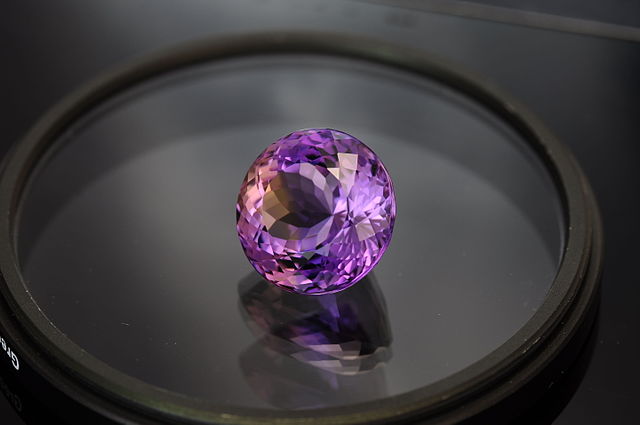
SUMMARY: Some people make distinctions between different kinds of synthetic or lab-grown gems. In fact, you may even find different definitions of synthetic material. Two other terms commonly used in jewelry are simulated and created gemstones. To clarify matters, here are some general definitions of these words. READING TIME: 4 MIN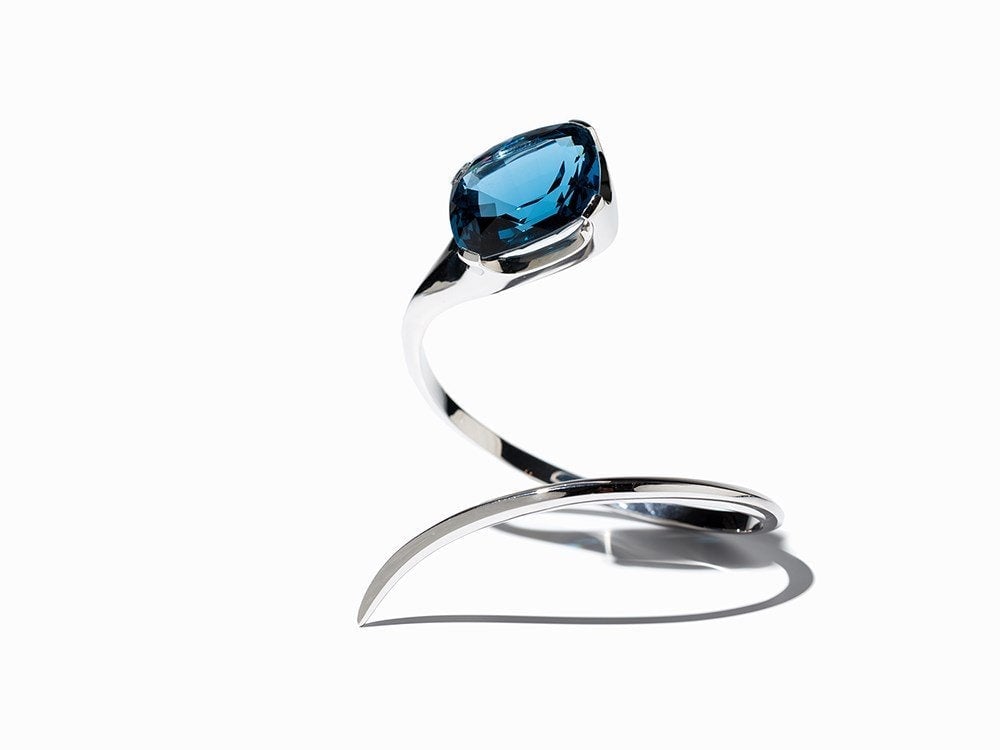
Futuristic 18k white gold bracelet with a 50-ct synthetic blue spinel. Photo courtesy of liveauctioneers.com and Auctionata Paddle 8 AG.
Synthetic Gemstones
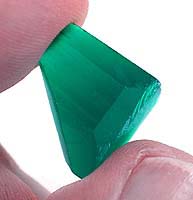
Synthetic emerald rough, created via the hydrothermal process. This process mimics the natural formation of emerald very closely, so identifying a hydrothermal emerald can prove challenging. © Jeff Graham.
You’ll hear many terms used interchangeably with synthetic, such as “artificial,” “lab-grown,” “lab-made,” “man-made,” etc. All these terms identify gemstones created in laboratories, not in nature.
There are many processes for synthesizing gems. Some are inexpensive, some are very expensive, but they’re all conducted artificially, in a lab. They may mimic or reproduce natural processes and use the same ingredients found in the natural stones. However, these processes occur in labs, not underground in nature.
Some synthetic stones are chemically and optically identical to their natural counterparts. For example, synthetic emeralds may be real emeralds but not natural emeralds.
Depending on the process used, synthetic gemstones may even have the same inclusions and flaws found in natural gems. Or, they may have telltale signs they’re synthetic. Distinguishing between synthetics and their natural counterparts can be very difficult.
However, some synthetic stones just look like natural stones without being chemically and optically identical to them. (Some synthetic stones have no counterparts at all in nature). Gemstones synthesized in a lab that simply imitate natural stones are called simulated gemstones or simulants.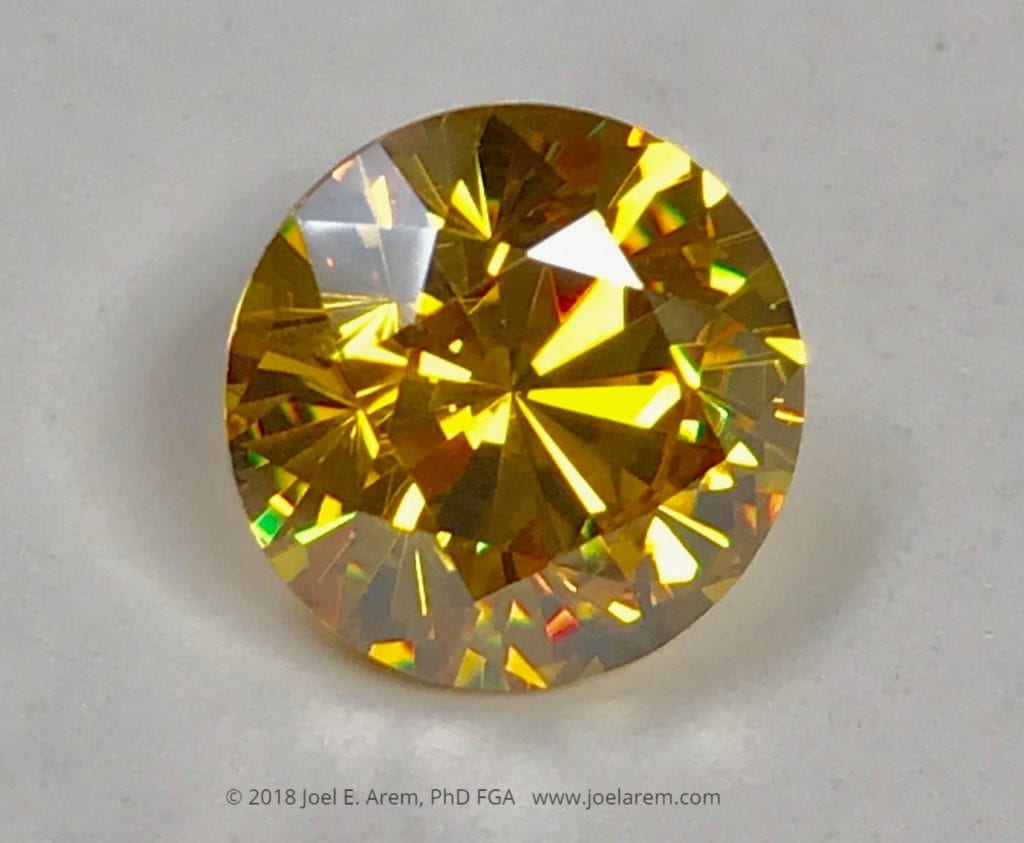
Although many synthetic gems are minerals that also occur naturally, some lab-created gems have no natural mineral counterparts. For example, bismuth germanium oxide is a synthetic material with many industrial applications but no natural mineral counterpart. This beautiful gemstone was cut from this material as a curiosity. © Joel E. Arem, PhD, FGA. Used with permission.
Simulated Gemstones
Not all simulants originate in labs. Glass pieces and assembled stones like doublets and triplets are often used to simulate natural gems. Sometimes, vendors may present one kind of natural gemstone as another, for example, a garnet doublet cut to look like a ruby. Jewelers also frequently use spinels, both natural and synthetic, to imitate other gemstones.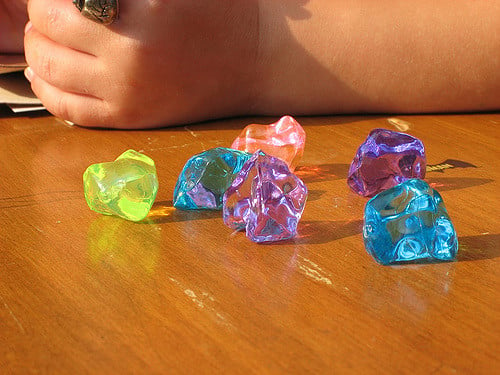
“Fake Gems (23),” plastic pieces. Photo by Doug Waldron. Licensed under CC By-SA 2.0.
Regardless of its origins, a simulated gemstone is a piece presented to “look like” another gemstone. A close gemological analysis would reveal its true identity. Simulants are also called imitations, faux, and fakes. While a garnet simulating a ruby may be a real garnet, it’s a fake ruby. Some vendors may be honest about selling simulants. Others may not disclose what the gem truly is. (Sometimes, gems are sold with misleading names). Buyer beware.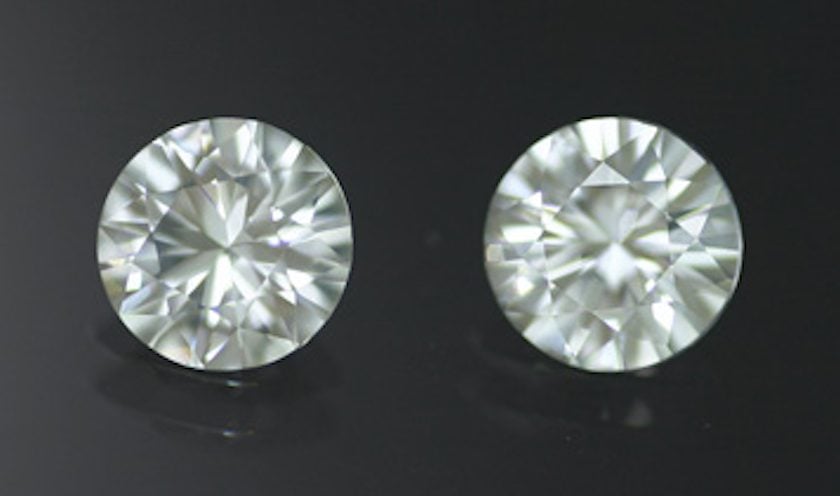
Although zircons are actually rarer than diamonds and have different physical and optical properties, jewelers used natural colorless zircons as diamond simulants for centuries. However, they can make beautiful gemstones in their own right. Pair of round brilliant-cut colorless zircons, 3.08 cts, 7 mm, Cambodia. © The Gem Trader. Used with permission. (Cropped to show detail).
Created Gemstones
People who sell synthetic gems rarely use the word “synthetic.” You’ll almost always find “created gemstones” instead of synthetic gemstones for sale. Although a synthetic may be a real gemstone, the term “synthetic” has strong popular connotations of being “not real” as well as “not natural.”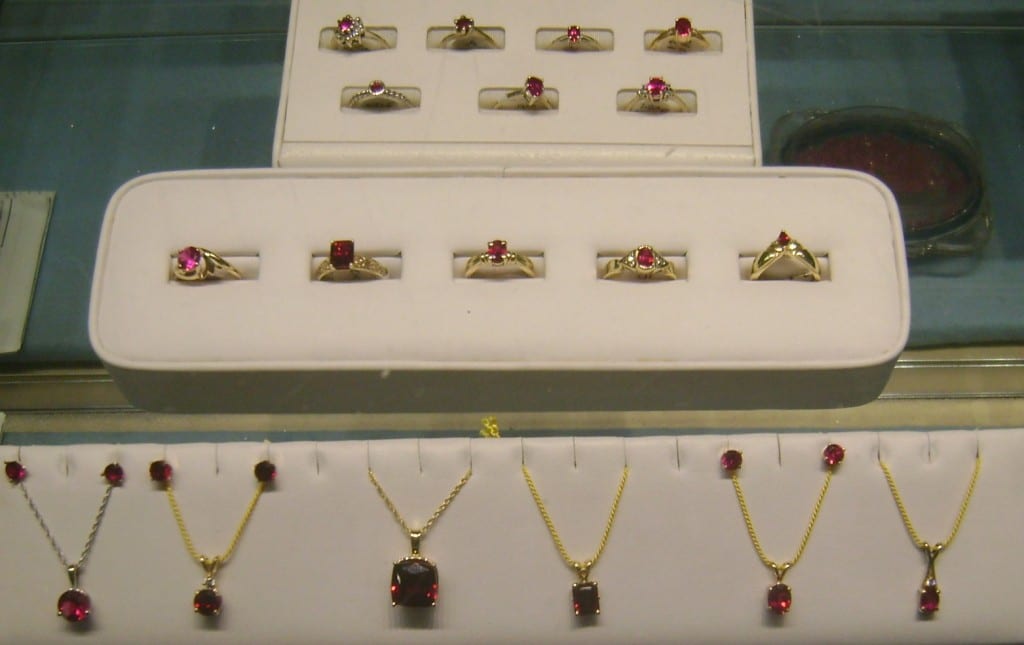
“Created gemstones” may have a nicer ring to consumers than synthetic gemstones. Display of created rubies, Shelby Gem Factory. Photo by Doug Coldwell. Licensed under CC By-SA 4.0.
Gemologically, a synthetic stone may be both real and not natural. Nevertheless, some consumers may find this qualification hard to accept. Referring to synthetic as created gemstones may help skirt those associations altogether.
Synthetic or created gemstones have been on the market since the early 1900s. Simulated gemstones or “lookalikes” have been around as long as people have valued gems. Don’t assume that an old stone is a natural stone.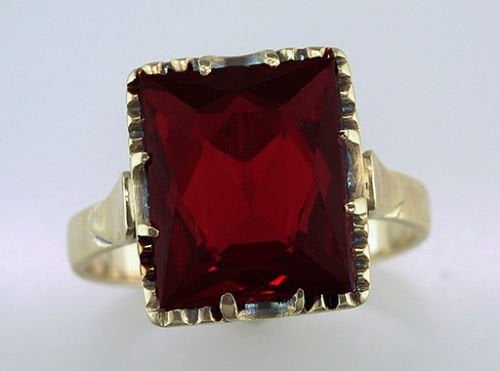
In the late 19th century, corundum — ruby and sapphire — became one of the first gemstones created in laboratories to have the size and quality suitable for jewelry use. This Art Deco-style yellow gold ring, featuring a 6-ct synthetic ruby, is over 85 years old. Photo courtesy of liveauctioneers.com and Ultramax Auctions.
Treated Natural Gemstones
There are many gemstone treatments and enhancements used to improve natural gemstone rough. For example, heat is often used on sapphire to improve color and melt silk inclusions. Some people would consider all treated stones as synthetic or created gemstones. Personally, I don’t generally agree with this view. However, I think a gray area does exist. If a natural gem receives extreme treatments, it should fall under the synthetic category.
Editor’s note: take a look at the 2018 IGS survey on gemstone treatments to see the range of opinions people have on the subject. For an example of what might constitute “extreme treatment,” consider the acid treatment Type B jade receives.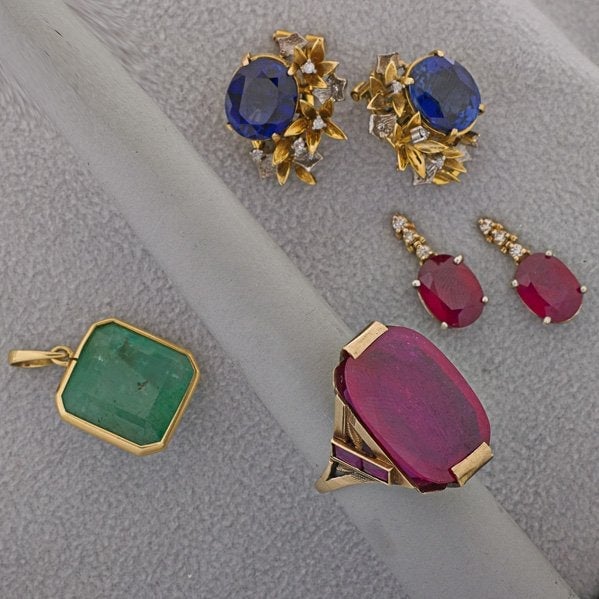
A natural emerald pendant, a glass-infused ruby ring, a pair of glass-infused ruby and diamond earrings, and a pair of lab-created blue and colorless sapphire earrings. Photo courtesy of liveauctioneers.com and Rago Arts and Auction Center.



